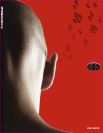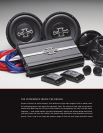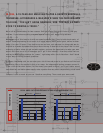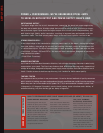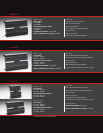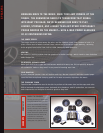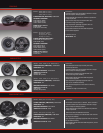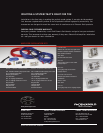
POW ER + PERFORMA NCE. WE’VE ENGINEERED RY VAL A MPS
TO E XCEL IN BOTH OU TPU T AND POWER SU PPLY. HERE’S HOW :
OUTSTANDING OUTPUT
The output stage acts like a car’s transmission, converting the electrical power supplied by
the amp into a usable force. A better output device supplies more current, producing a cleaner,
more accurate signal. Ryval uses Darlington output drive circuitry with complementary 100
watt bipolar high-fidelity audio transistors, resulting in improved amp performance with low
impedance loads. The most robust power amps in the world use bipolars—and so do we.
STRONG POWER SUPPLY
If the output stage is the transmission, then the power supply is the motor—taking the voltage
from your battery, alternating the current, and running it through a step-up transformer until
it’s more than tripled. The Ryval’s power supply is well protected, reliable, and with low loss
(8 milliohm, 110 amp, 200 watt FETs*) for more efficient conversion, designed to ensure the
amp reaches true power.
(*Field Effect Transistor)
REDUCED DISTORTION
You’ll hear a lot of talk about harmonic distortion, but odd order harmonic distortion is what really
compromises your sound. The Ryval amp features dual differential topology and a symmetrical
voltage drive stage, designed to improve power supply noise rejection and reduce distortion on all
levels. It costs us more to build an amp this way, but it makes for better sound quality.
TORTURE TESTED
Our equipment has to perform in any environment. So we’ve devised methods of quality assurance
which consist of putting our amps and speakers through conditions we couldn’t survive ourselves.
When they can run for two weeks at full power 24/7 in an environmental chamber cycled from
14 degrees to 131 degrees Fahrenheit, survive shock testing, brutal vibrations and a battery of
endurance testing, only then do they get our stamp of approval.
SOUND BITE TRICKS OF THE TRADE
QUALITY PERFORMANCE? HERE’S WHAT SOUND SPECS ARE (OR AREN’T) TELLING YOU
POWER HANDLING: RMS VS MAX
This testing option will tell you
whether the specs you’re looking
at will really get you the power
they promise. RMS, or Root Mean
Square, means that the power was
tested at a continuous level—one
that your system could sustain.
MAX is the number obtained by
running the system to the highest
possible capacity—something that
no system could maintain.
CEA METHOD
CEA—the Consumer Electronics
Association—sets standards for
performance testing. This tells
you that the numbers listed CEA
were obtained with reasonable-use
testing practices.
THD (TOTAL HARMONIC
DISTORTION) PERCENTAGE
Audio companies spend a lot of
money to market their products
(we’re doing it right now). So
if they’re NOT mentioning a
particular number in testing, it
probably means they don’t want
you to know what it is. Most
people can’t hear THD at less
than 1%. But some tests provide
performance numbers with a
THD so high you’d never listen to
it—they just don’t list the THD.
AMPLIFIE RS



